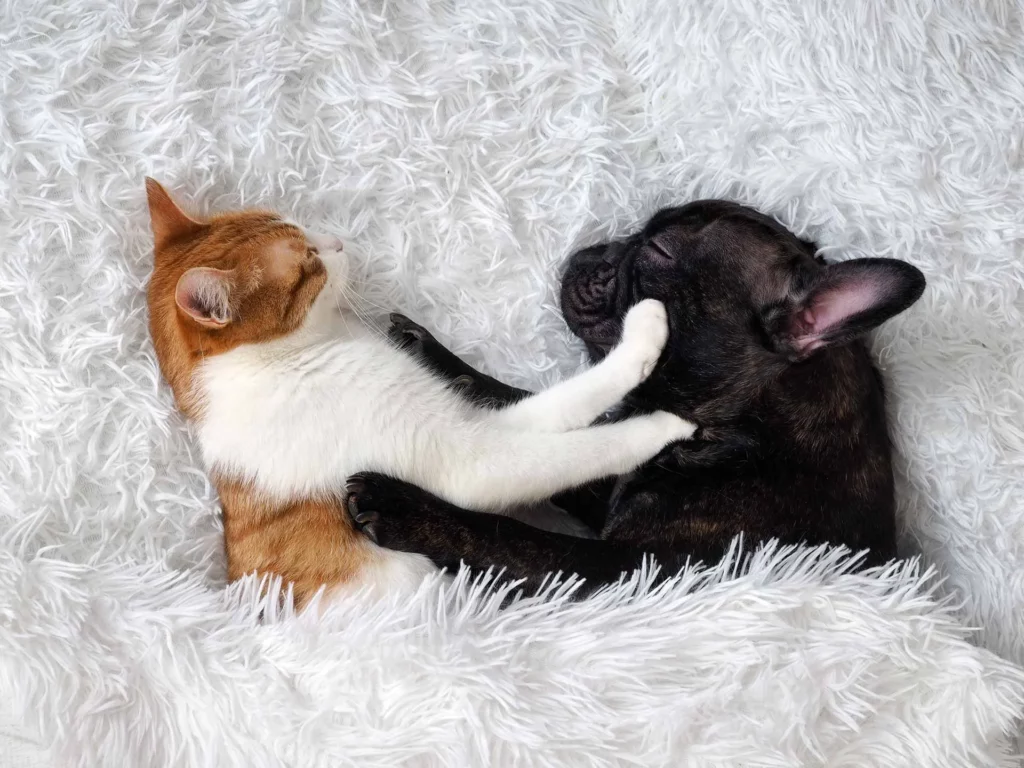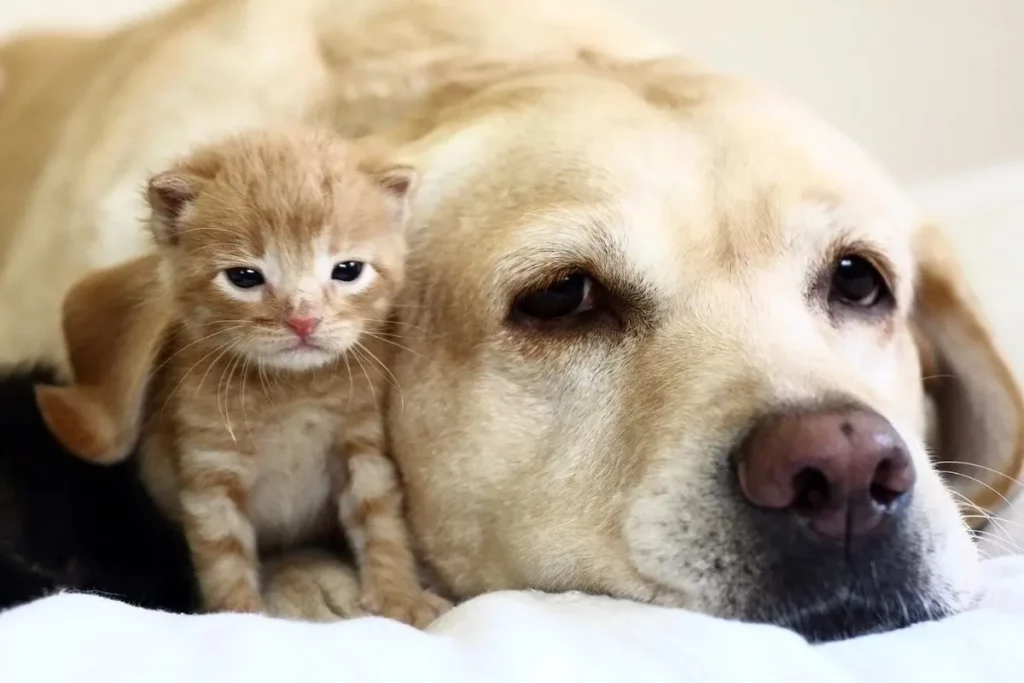Are you looking for effective ways to introduce kittens to dogs? Keep reading to know the effective ways you can introduce kittens to dogs.

Introducing kittens to dogs is a delicate process that requires careful planning and consideration.
Selecting the right dog with a calm temperament is essential for a successful integration.
While it may seem challenging, with the right approach, you can foster a harmonious relationship between your feline and canine companions.
In this guide, we’ll walk you through a step-by-step process to ensure a smooth introduction, emphasizing positive associations and patience.
How to Introduce Kittens to Dogs

Here are effective ways and procedures you can use to introduce kittens to dogs:
1. Gradually Expose the Dog to the Scent of the Kittens
Begin by allowing your dog to gradually get accustomed to the scent of the new kitten.
Start the introduction process by swapping bedding or toys between the dog and kitten.
Furthermore, this scent exchange helps them become familiar with each other’s unique smells, creating a foundation for acceptance.
Dogs have a strong sense of smell, and this gradual exposure eases their initial meeting.
2. Let the Dog and Kitten See Each Other
Introduce the visual element by allowing the dog and kitten to observe each other through a barrier like a baby gate or a partially open door.
Furthermore, this controlled visual introduction enables them to assess each other’s presence without the potential stress of direct contact.
It’s a non-threatening way for them to become accustomed to the sight of their new companion.
3. Keep the Dog on a Leash When Introducing the Kitten
For the first in-person meeting, keep the dog on a leash while allowing the kitten to explore freely.
This controlled environment minimizes the potential for sudden movements that could startle either pet.
In addition, it provides a safe space for initial interactions, allowing them to gauge each other’s behavior without fear.
4. Use Positive Reinforcement for Good Behaviors
Use positive reinforcement to encourage desirable behavior.
When the dog remains calm and the kitten feels secure, reinforce this positive interaction with treats and praise.
This creates a positive association, helping both animals understand that good behavior is rewarded.
5. Provide the Kitten With Elevated Spaces
Ensure the kitten has safe elevated spaces where it can observe the dog from a distance.
Cats often feel more secure when they have vertical spaces to retreat to.
Furthermore, this setup allows the kitten to acclimate to the dog’s presence while having a safe vantage point.
6. Engage Both the Dog and Kitten in Parallel Activities
Foster positive associations by engaging both pets in parallel activities.
This could involve playing with toys or receiving attention from their respective owners simultaneously.
Parallel activities create a shared positive experience, contributing to a harmonious relationship.
7. Gradually Progress to Controlled Off-Leash Interactions
As both pets become more comfortable, progress to controlled off-leash interactions.
Ensure this takes place in a secure environment, and closely monitor their behavior.
Be prepared to intervene if any signs of stress or discomfort arise.
8. Be Patient Throughout the Introduction Process
Be patient throughout the introduction process, and never leave the dog and kitten alone unsupervised initially.
Patience is key in introducing a kitten to a resident dog. Even if progress seems positive, never leave them alone unsupervised in the early stages.
Close supervision ensures the safety and well-being of both pets and allows for prompt intervention if needed.
In conclusion, introducing a kitten to a resident dog requires patience, understanding, and careful management.
By following these eight strategies, you can build a harmonious relationship between your feline and canine family members, fostering a bond that lasts a lifetime.
Each pet is unique, so progress may vary, and it’s essential to tailor the introduction process to their individual temperaments and behaviors.
Related Searches:
